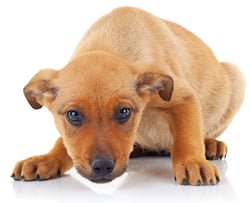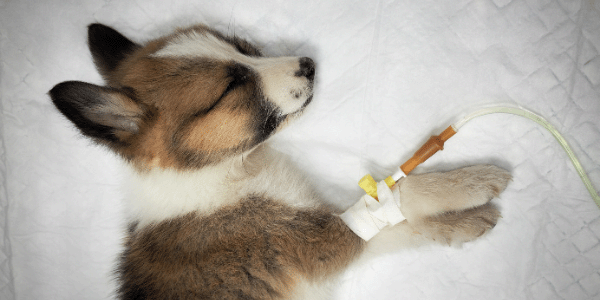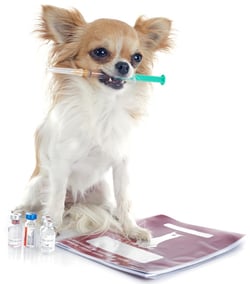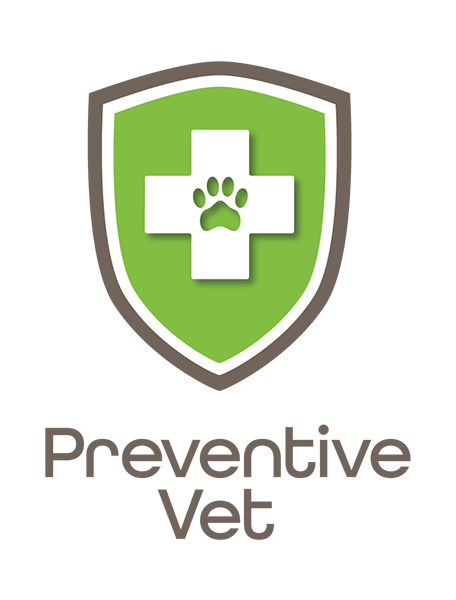- en
Parvovirus is often just referred to as parvo, and the good news is that dogs can survive it.
This virus creates gastrointestinal symptoms in your dog. The following information will help you know what to look for, what to do, and how to help prevent this in future dogs you get.
Quick Links

The canine parvovirus first emerged in 1976 in Europe. It became a worldwide epidemic, spreading uncontrolled in 1978, causing myocarditis (inflammation of the heart muscle) and inflammation of the intestines. The virus infects not only dogs but also other wild canines like coyotes and wolves. It has also been found in foxes, skunks, and raccoons. Canine parvovirus is closely related to feline panleukopenia virus (FPV).
Our mission is to help save dogs' and cats’ lives through our educational content. To support our efforts, this page may contain affiliate links. We earn a commission for qualifying purchases – at no cost to you.
Canine parvovirus is a highly contagious virus that attacks rapidly dividing cells of the intestines, bone marrow, and lymphoid tissue.
All dogs can be affected, but those at most risk are unvaccinated dogs and puppies younger than 4 months. The typical age of those affected is between 6 and 20 weeks. Puppies younger than 6 weeks of age are usually protected by their mother’s immunity. Mature dogs usually have been vaccinated or have developed immunity from getting infected in the past and fighting them off the infection.
Infection occurs by ingestion of dog poop from other infected dogs. This is referred to as the feco-oral route of infection. During the initial phase of infection, and for about 1 to 2 weeks after, extremely large amounts of parvovirus is present in the poop of infected dogs. Only trace amounts of infected feces are needed to cause illness in dogs.
This virus is able to survive and remain infectious for months in the environment (i.e., yards, kennels, etc.) and on objects (i.e., bowls, leashes, collars, unwashed bedding, etc.). It is resistant to heat, cold, humidity, and drying. The virus is easily moved from place to place on the hair or paws of dogs or by people’s shoes. Individuals caring for infected dogs can transmit disease via their hands or clothing to other dogs.
The signs of illness usually occur 5 days after exposure but have been seen as long as 14 days after.
The virus affects a dog’s gastrointestinal tract causing the following signs:
Most deaths occur within 2 to 3 days from the onset of signs if no treatment or care is given. Therefore, contact your veterinarian immediately if you notice any of the symptoms of parvovirus. Even with aggressive and proper treatment, puppies may still die. But it has been shown that with aggressive treatment, 90% of dogs survive.
Parvovirus is highly contagious. The puppy or dog is infected by ingesting poop that contains the virus. The virus can survive in the environment and on objects. It is easily spread from dog to dog by direct contact as well as by contact with contaminated objects and places.
You must use caution as to where you bring your dog or the objects they come into contact with if your dog is not fully vaccinated.
Vaccination for parvo begins around 6 to 8 weeks of age. Booster shots are given every 3 to 4 weeks until the puppy is 20 weeks. The reason for this, is that some puppies carry their mother’s immunity against the virus until 18 weeks of age. You want to be sure that your puppy gets their last parvo vaccination after 18 weeks.
While the evidence is sparse and the cause is poorly understood, there appears to be a higher risk of infection and severity of the disease with the following breeds.
If your puppy or dog exhibits any of the signs of parvo, such as vomiting, watery diarrhea, loss of appetite, depression, etc., contact your veterinarian. The virus is suspected based on your pet’s history, physical exam, and tests. The diagnosis is usually confirmed with a fecal test – your veterinarian will use a poop sample to test for the virus.
Note: There are times when a fecal test will be negative, but your dog may still have parvovirus. Your veterinarian will treat your pup for the suspected diagnosis of parvo.
Most dogs can recover if aggressive treatment is used and treatment is started before dehydration and severe septicemia (whole-body bacterial infection) occurs. This usually requires an extended period of hospitalization in isolation at a veterinary clinic. This period is at least 5 to 7 days. Treatment can be expensive.
Unfortunately, there are no specific drugs available to kill the virus in sick dogs. The purpose of treatment is to help support your dog’s immune system. This is done by tackling dehydration by replacing electrolytes, proteins, and fluids lost. Medications are used to control vomiting and diarrhea as well as prevent secondary infections. Since your dog is sick, efforts will be made to keep them warm as well.
Once your dog has been placed in veterinary care, be sure to ask your veterinarian to provide you with guidance on cleaning and disinfecting agents for your home. Some veterinary-recommended products, in addition to diluted bleach (1:30 dilution), are Rescue, Neutral Q, and D-128. Be sure to read all labels carefully with regard to diluting the product.
Another non-chemical option is to use the Tersano iClean® mini. It has been scientifically proven to be 50% better than bleach and is 99.44% effective in killing parvovirus.
Unfortunately, there is no way to disinfect or treat yards or grassy areas. But dog crates, concrete, bowls, etc., can be cleaned and disinfected. Remember that the disinfectant must be in contact with the item for at least 20 minutes. Be sure to rinse all items well after being treated. Usually, it is recommended to repeat the treatment process a few times just as a precautionary measure.
The infective virus can be destroyed with a 1:30 bleach solution (1 cup of bleach to 30 cups of water). Objects should be soaked in the solution for at least 20 minutes. Then, rinse objects and repeat the process two more times. Be sure to always rinse well.
If you use the iClean® mini, thoroughly spray and wet all objects and allow them to completely dry (needs 5 minutes of contact time). As added insurance, you can repeat this process. There is no need to wipe or rinse anything.
Do all this cleaning and disinfecting while your dog is in the hospital so that they have a clean environment to come home to.
While you cannot disinfect the outdoors or your yard, the concentration of the virus can be diluted with rain or watering. Add to this the sanitizing benefits of UV light from the sun, and the virus can be brought down some in a few weeks. But because the virus is essentially invisible, there's no way of easily knowing that the outdoor environment is clear of the virus, so keep your dog away from potentially hazardous areas, as mentioned in the "How Did This Happen" section above.
Anything that cannot be disinfected with bleach or the disinfecting agents your veterinarian recommends, should be thrown away.
Once your dog is receiving the necessary care at their veterinarian’s hospital, there should be a decrease or no more vomiting in about 3 to 4 days. Your veterinary will let you know that the diarrhea is no longer bloody, and the stool has started to become firmer. When your pup appears less depressed, is more active, and begins to show interest in food and water, your veterinarian may decide to discharge them from the hospital and let them come home with you.

If by the third or fourth day of hospitalization with your veterinarian, your pet has not shown any signs of improvement, the prognosis is poor. Even with continued treatment, your pet may not survive.

Even though it is not common, puppies and adult dogs can get parvo again. Typically, once a puppy or dog has had parvo and recovered, they generally have protection for several years. This isn’t guaranteed because there is more than one strain of parvo. So as soon as they have fully recovered, it is recommended that you get them vaccinated.
 The best way to prevent your dog from getting parvovirus is to vaccinate and avoid any situations that can put them at risk of exposure to the virus until they are protected by the vaccine. This doesn’t mean isolating them to a room in your home. It just means, avoid places like dog parks or pet stores, which create a higher risk of exposure.
The best way to prevent your dog from getting parvovirus is to vaccinate and avoid any situations that can put them at risk of exposure to the virus until they are protected by the vaccine. This doesn’t mean isolating them to a room in your home. It just means, avoid places like dog parks or pet stores, which create a higher risk of exposure.
If your household has had a dog with parvovirus prior, do not allow your new puppy or adopted dog, until they are fully vaccinated, to go near any places that the other infected dog was. For example, do not use the same bowls, bedding, or crates until they have been fully disinfected. This is especially true for any place where the other pet went to the bathroom. See the cleaning steps above in the section, "What You Should Do If Your Dog Has Parvovirus."
The key to protecting your dog is vaccinating them for parvovirus and knowing the environment and objects they are exposed to. Also, seeking veterinary care promptly if you notice any signs of the virus.
The Pet InfoRx® is made possible, in part, through our partnership with AlignCare®.


© Preventive Vet. All rights reserved. PreventiveVet.com
